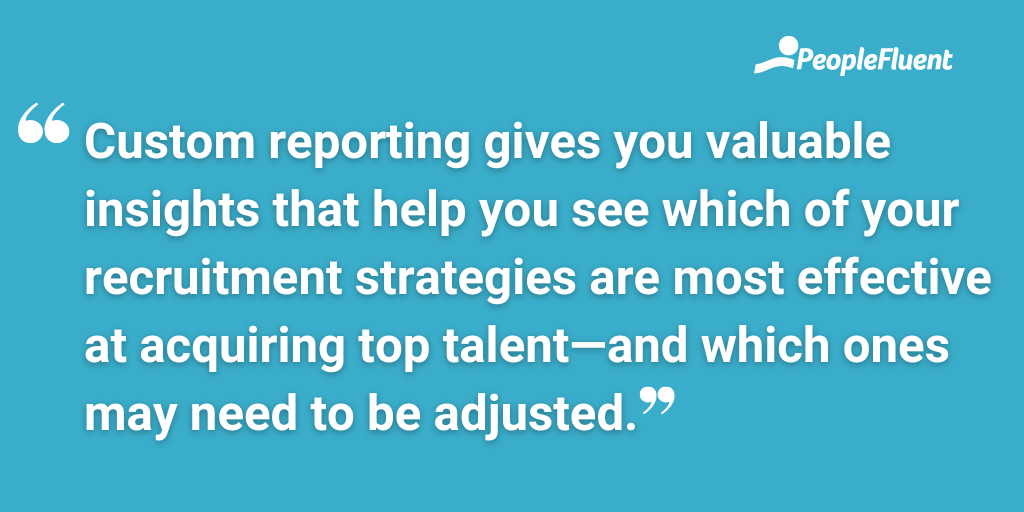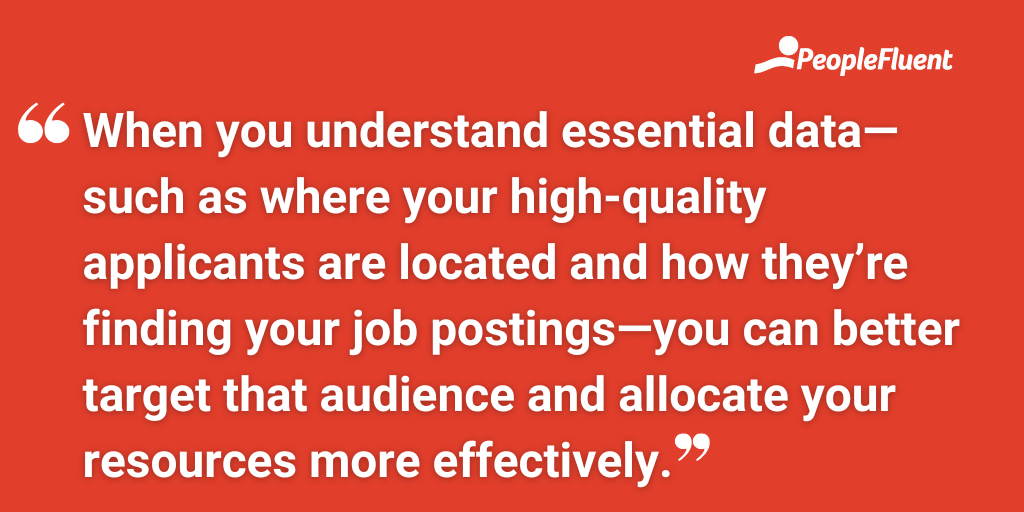Published: Mar 21, 2023Time to read: 4mins Category: Talent Management
How Data Insights Lead to More Efficient Recruiting Processes
There are always financial implications for your organization when recruiting talent. You have to consider the cost of advertising your job openings and onboarding new employees. You also have to account for the impact any unfilled roles have on your organization’s bottom line.
That’s why it’s imperative to have efficient processes that ensure you’ll get the best return on your investment with your hiring practices. Fortunately, data insights from custom reports and recruiting analytics in your applicant tracking software (ATS) can lead to greater efficiency. Read on to learn how.
Using Data to Understand Cost to Hire Metrics
According to recent research, two-thirds of organizations claim it takes fewer than 30 days to hire for an entry-level position, but more than half of these companies take longer than a month to fill senior-level roles. Additionally, one bad hire can cost your organization anywhere from $17,000 to $240,000. If it’s taking you 30 days to fill a vacancy at a cost of $17,000, then your company is spending well over $550 each day the position remains open.
Refining your hiring processes can shorten the gap and save your organization significant resources, but you need to have a clear understanding of your systems before you can effectively implement change. Surprisingly, only 54% of companies feel they’ve a good understanding of their time to fill metrics.

KEEP READING | ‘Highly Configurable & Candidate-Friendly: Why You (And Your Applicants) Win With PeopleFluent Recruiting’
Custom reporting gives you valuable insights that help you see which of your recruitment strategies are most effective at acquiring top talent—and which ones may need to be adjusted. A time-to-fill analysis allows you to identify how long various positions stay open compared to others. With this knowledge in hand, you can begin to make connections and identify other factors that might contribute to longer fill times.
Having data to help explain why some positions stay vacant longer than others gives you a starting point for updating your hiring practices and becoming a more efficient recruitment team.
Using Data to Assess Quality of Hire
Another essential recruiting metric is quality of hire. You want to make sure you’re bringing in new employees who will add value to the organization and become assets to the company. Despite its importance, only 57% of organizations feel they’ve an excellent understanding of their quality of hire metrics. To better understand your candidates’ value—and the relative success of your recruiting efforts—you’ll need to analyze this applicant data.
Some recruiting analytics tools incorporate artificial intelligence (AI) that suggests insights to help you better understand your quality of hire data. AI embedded into your analytics is another great tool that empowers you with the information needed to make informed hiring decisions. Insights gleaned from AI technology quickly show you your highest and lowest numbers, as well as point out data anomalies that could be impacting the overall information.

READ MORE ON RECRUITMENT | ‘The Great Resignation Debate: Do We Have a Labor Shortage or a Skills Shortage?’
Despite its many uses, only 48% of organizations report leveraging AI to enhance their talent acquisition processes, and 27% don’t use it at all. If you’re taking advantage of AI, you can gain powerful insights into your recruiting efforts that other organizations lack.
You can also leverage custom reporting tools such as applicant stage analyses to gain actionable insights about where your candidates have come from and what potential value they might bring to your organization. As you improve your understanding of your quality metrics for candidates and new hires, you can more precisely target your future recruitment efforts and improve your overall processes.
Data Reporting Gives You a Competitive Edge
When you understand essential data—such as where your high-quality applicants are located and how they’re finding your job postings—you can better target that audience and allocate your resources more effectively. Leveraging data and recruiting analytics will also help you improve your processes and gain an advantage over your competitors.
In fact, if you’re using recruiting analytics, you’re already ahead of the game. Only about one-third of organizations are taking advantage of this technology. Unfortunately, those who aren’t could soon fall further behind in the recruiting space.
Leveraging recruiting data is an essential part of attracting top talent to your organization. These tools help make your hiring teams more efficient, analytical, and confident when bringing on new hires. The best part? These tools are at your fingertips—with the right recruiting software.
Discover the Full Power of Recruiting Analytics
Ready to learn more? Download our ebook, ‘Refresh Your Recruiting Strategy: How Leveraging Recruiting Analytics Lands You High-Quality Talent,’ or request a demo today.